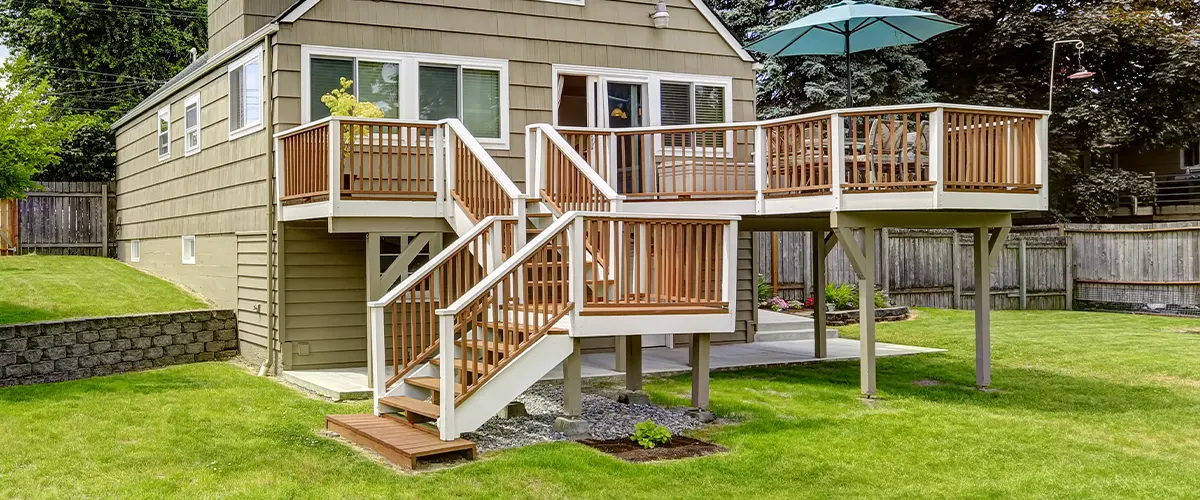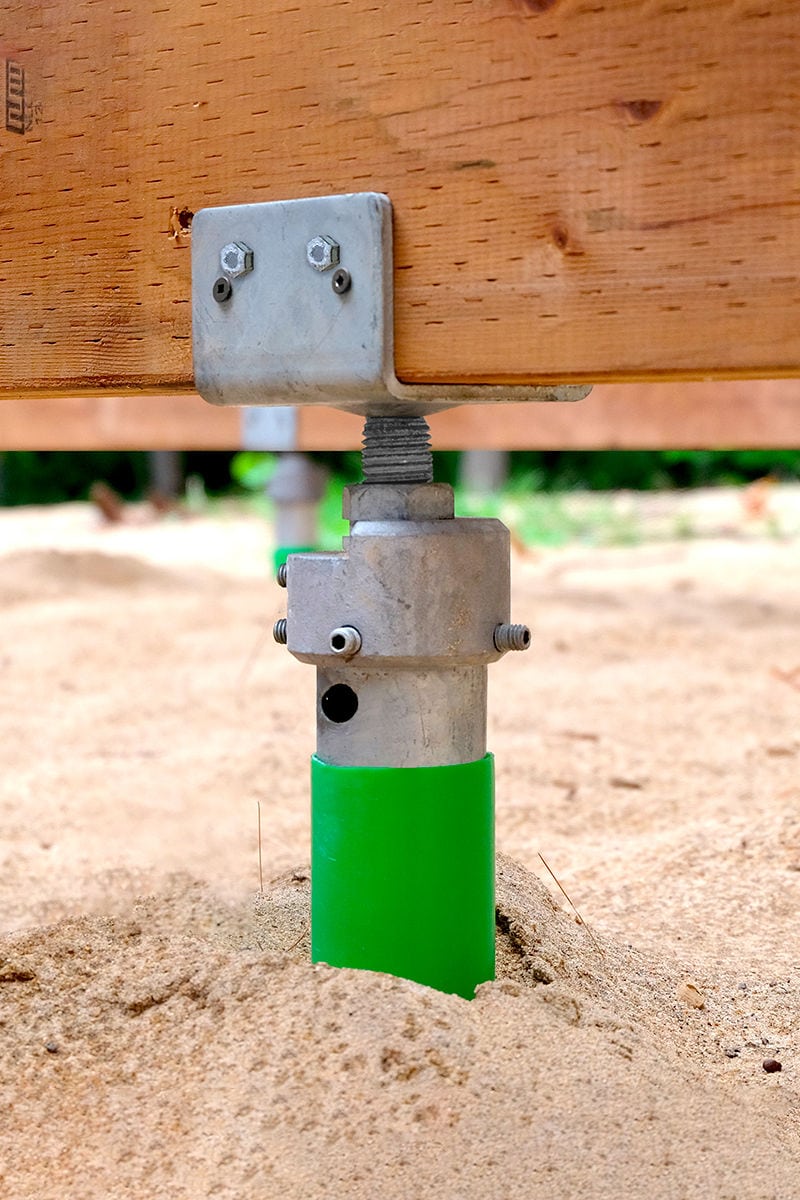Expert Tips for Putting Up Deck Footings to Support Your Outdoor Space
When it comes to building a deck, one of the most vital aspects to think about is the installment of appropriate footings. These footings are the foundation upon which your exterior area will rest, providing stability and support for years to come. What precisely does it take to mount deck grounds correctly?
Significance of Correct Deck Footings
Correct deck grounds are crucial for making sure the security and durability of your outside space. When building a deck, it is important to take notice of the foundation on which it will certainly rest. Deck footings offer the essential support for the whole framework and aid distribute the weight uniformly - Deck Footings. Without solid and appropriately set up grounds, your deck may become unsteady, bring about safety and security dangers and costly fixings.

In enhancement to security, correct deck footings additionally add to the long life of your exterior space (Deck Footings). Grounds that are designed and built to endure the elements and dirt conditions in your location will aid protect against the deck from changing or working out with time. By making sure the footings are effectively sized and set up, you can minimize the threat of damage to the deck framework, prolonging its life-span and decreasing the need for expensive repair work or substitutes

Picking the Right Sort Of Footings
When picking the proper sort of grounds for your deck, it is necessary to consider factors such as dirt conditions, regional building regulations, and the overall layout of your outside area. The kind of footing you pick will play a critical duty in making certain the security and long life of your deck.
One typical sort of footing is the concrete footing. Concrete grounds are appropriate for a lot of dirt problems and supply exceptional assistance for decks. They are commonly set up below the frost line to avoid shifting and working out as a result of freezing and thawing cycles. One more choice is helical piers, which are optimal for locations with unsteady soil or high water tables. These piers are screwed into the ground and supply solid support for the deck.
In many cases, you might require to make use of specific footings, such as stack footings or deep foundations, if you are building a multi-level or large deck. These grounds are developed to distribute the weight of the deck over a bigger location, making certain stability and avoiding clearing up or sinking.
Before picking a kind of footing, it is important to consult local building regulations and regulations to make certain compliance. Furthermore, think about the design and planned use of your exterior area. Elements such as the dimension, shape, and load-bearing demands of your deck will affect the type of footing that is most appropriate.
Preparing the Ground for Footing Installment
To appropriately prepare the ground for footing installation, it is vital to evaluate the soil problems and take required actions to make certain security and resilience of the deck. The first action is to dig deep into the location reference where the grounds will certainly be mounted.
When the area has actually been dug deep into, the next action is to small the soil. This can be done making use of a plate compactor or by utilizing a hand meddle. Compacting the dirt aids to remove any type of gaps or air pockets, which can bring about settling and instability in time.
After condensing the soil, it is essential to lay a layer of crushed rock or crushed rock at the base of the excavation. This will give drainage and assistance to stop water from merging around the grounds, which can cause erosion and instability.
Step-by-Step Guide to Installing Deck Footings
After appropriately preparing the ground for footing setup, the next step is to start the process of mounting deck footings. This step-by-step overview will certainly offer you with a clear understanding of how to mount deck footings for your outside area.
Establish the place: Start by noting the placements of the deck grounds making use of stakes and string. Make certain that the places line up with the design and design of your deck.
Dig the openings: Make use of a post hole digger or an auger to dig the openings for the grounds. The deepness and diameter of the holes must remain in accordance with local building codes and the certain demands of your deck layout.
Level the holes: Use a level to make certain that the openings are dug to the correct depth and are level with each various other. (Deck Footings)
Include crushed rock: Location a layer of gravel at the bottom of each opening to boost drainage and stop the wood from rotting.
Put the grounds: Position the grounds into the holes, making certain they are level and plumb. Utilize a level and a measuring tape to make sure precision.
Protect the grounds: Put concrete into the holes around the grounds, filling them to the top. Utilize a message level to make certain the grounds continue to be degree as the concrete sets.
Permit time for treating: Let the concrete treatment according to the supplier's instructions before waging the deck building.
Common Mistakes to Avoid During Footing Installment
One essential element to take browse around this site into consideration during the installment of deck footings is staying clear of common errors that can jeopardize the security and longevity of your outdoor area. While deck grounds may seem like a easy and simple component of the building my sources and construction process, ignoring specific aspects can result in expensive fixings and potential safety and security hazards down the line.

Additionally, neglecting to set up proper water drainage steps can create water to collect around the grounds, bring about rot, decay, and the ultimate weakening of the deck's foundation. Utilizing the wrong kind of footing product or failing to effectively secure the footings can compromise their architectural integrity.
To avoid these blunders, it is vital to talk to a specialist or adhere to market standards to guarantee appropriate ground setup. By doing so, you can make certain the stability and long life of your exterior space, giving a enjoyable and risk-free environment for years ahead.
Conclusion
To conclude, installing correct deck grounds is critical for the stability and longevity of your outdoor room. By selecting the right type of footings and appropriately preparing the ground, you can ensure a solid foundation for your deck. Following a step-by-step guide and preventing common mistakes during footing setup will better boost the toughness and safety and security of your deck.
Proper deck grounds are essential for ensuring the stability and durability of your outside area. The grounds offer as a link between the ground and the deck, permitting the weight of the deck and its passengers to be distributed evenly into the soil.One typical type of ground is the concrete footing. Put the footings: Position the footings right into the holes, making certain they are level and plumb. Protect the grounds: Put concrete into the openings around the footings, filling them to the top.